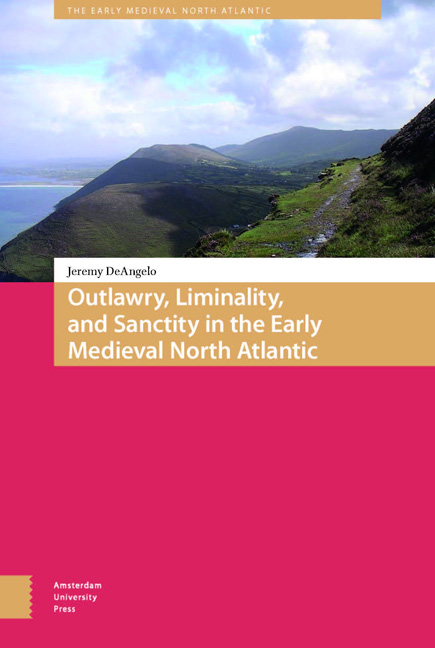Book contents
- Frontmatter
- Dedication
- Contents
- Acknowledgements
- Introduction: The Hermit and the Outlaw
- 1 Outlawry and Liminality in the North Atlantic
- 2 Imitating Exile in Early Medieval Ireland
- 3 Lessons of Conduct in Anglo-Saxon England
- 4 The Transgressive Hero
- 5 Cultural Exchange at the Boundaries of the Far North
- 6 Transgression in Transition after the Norman Conquest
- Bibliography
- Index
2 - Imitating Exile in Early Medieval Ireland
Published online by Cambridge University Press: 16 February 2021
- Frontmatter
- Dedication
- Contents
- Acknowledgements
- Introduction: The Hermit and the Outlaw
- 1 Outlawry and Liminality in the North Atlantic
- 2 Imitating Exile in Early Medieval Ireland
- 3 Lessons of Conduct in Anglo-Saxon England
- 4 The Transgressive Hero
- 5 Cultural Exchange at the Boundaries of the Far North
- 6 Transgression in Transition after the Norman Conquest
- Bibliography
- Index
Summary
Ailithre, Penance, and Punishment
In 891, three Irishmen washed up on the coast of Cornwall in a hide boat. Their vessel held neither oars nor supplies, but the story they told onlookers was not one of accident at sea. Instead, they claimed to have placed themselves in this perilous position because, in their words, ‘hi woldon for Godes lufan on eltiodignesse beon’ (‘they wished to be on pilgrimage for the sake of God's love’). Setting out on the sea, and the lack of conveyance, was entirely their own doing. They had given themselves enough food for seven days, but it had run out before they reached the British shore. Finding themselves in England, the three men made straight for the court of King Alfred.
These men were not outlaws. Nevertheless, whether they realized it or not, their actions imitated a form of criminal exile. The practice which the Anglo-Saxon Chronicle renders as elþiodignes for Godes lufan is a translation of the Latin peregrinatio pro amore Dei (‘peregrination for the sake of God's love’), a common description in Irish texts of what was known in the vernacular as ailithre. Ailithre was a type of pilgrimage peculiar to the early medieval North Atlantic, often associated exclusively with the Irish of the first few centuries of their Christianization. Despite its identification with the Irish, ailithre can often be found attached to interpretations of Anglo-Saxon society as well, a potential influence which will be considered later. As a practice, however, and as a literary trope, ailithre served as a vehicle (both literally and figuratively) for exploring questions of proper conduct in the newly Christian North Atlantic.
Latin manuscripts referred to ailithre as peregrinatio, which is often translated ‘pilgrimage’ in modern English. This term is not technically incorrect, yet it often lends itself to confusion due to a broader understanding of pilgrimage in the sixth through eighth centuries. Its modern definition – as a journey undertaken for devotional purposes to a shrine or other site of religious import – is largely anachronistic for the period of early Irish Christianity.
- Type
- Chapter
- Information
- Publisher: Amsterdam University PressPrint publication year: 2018



